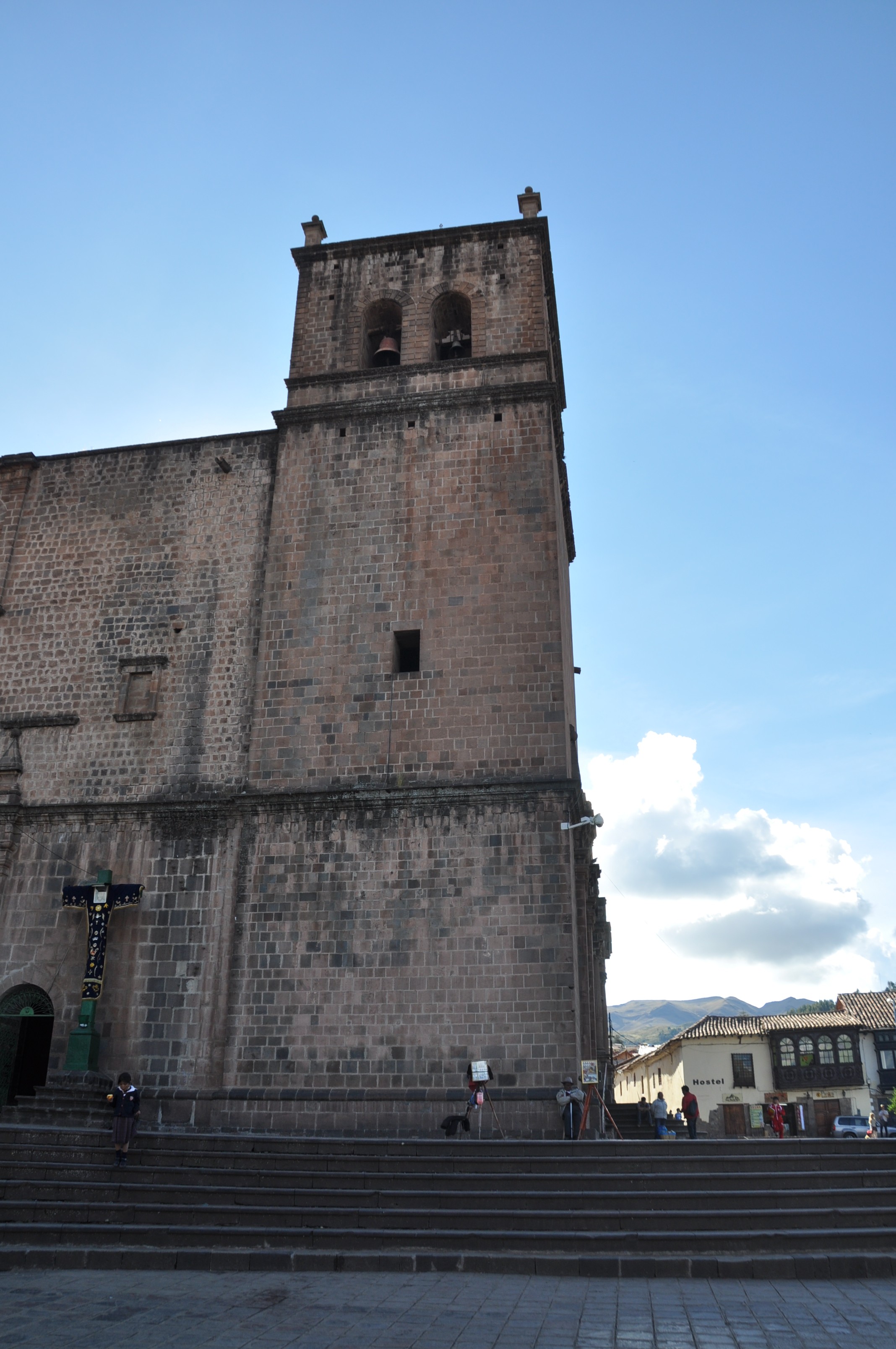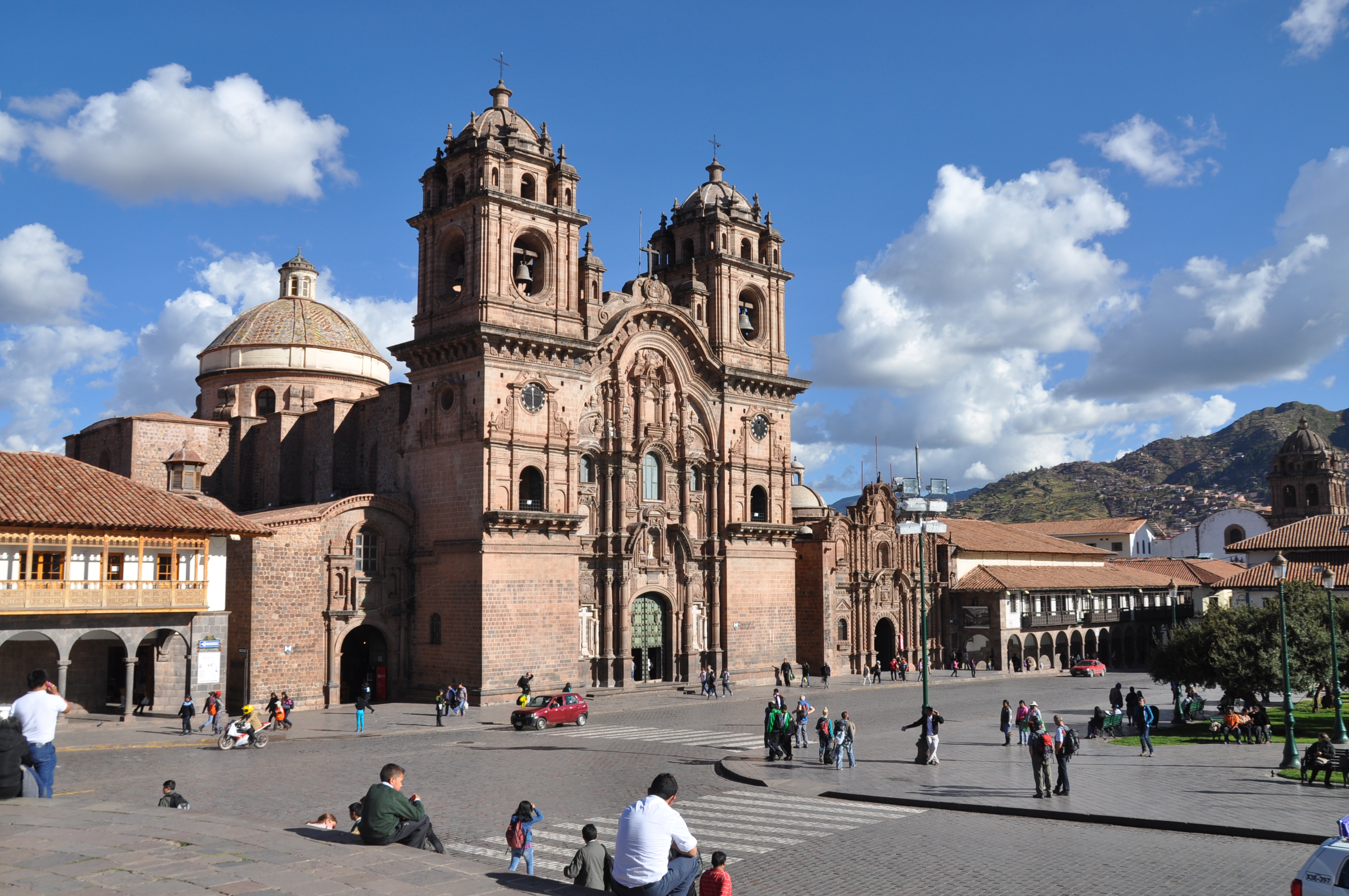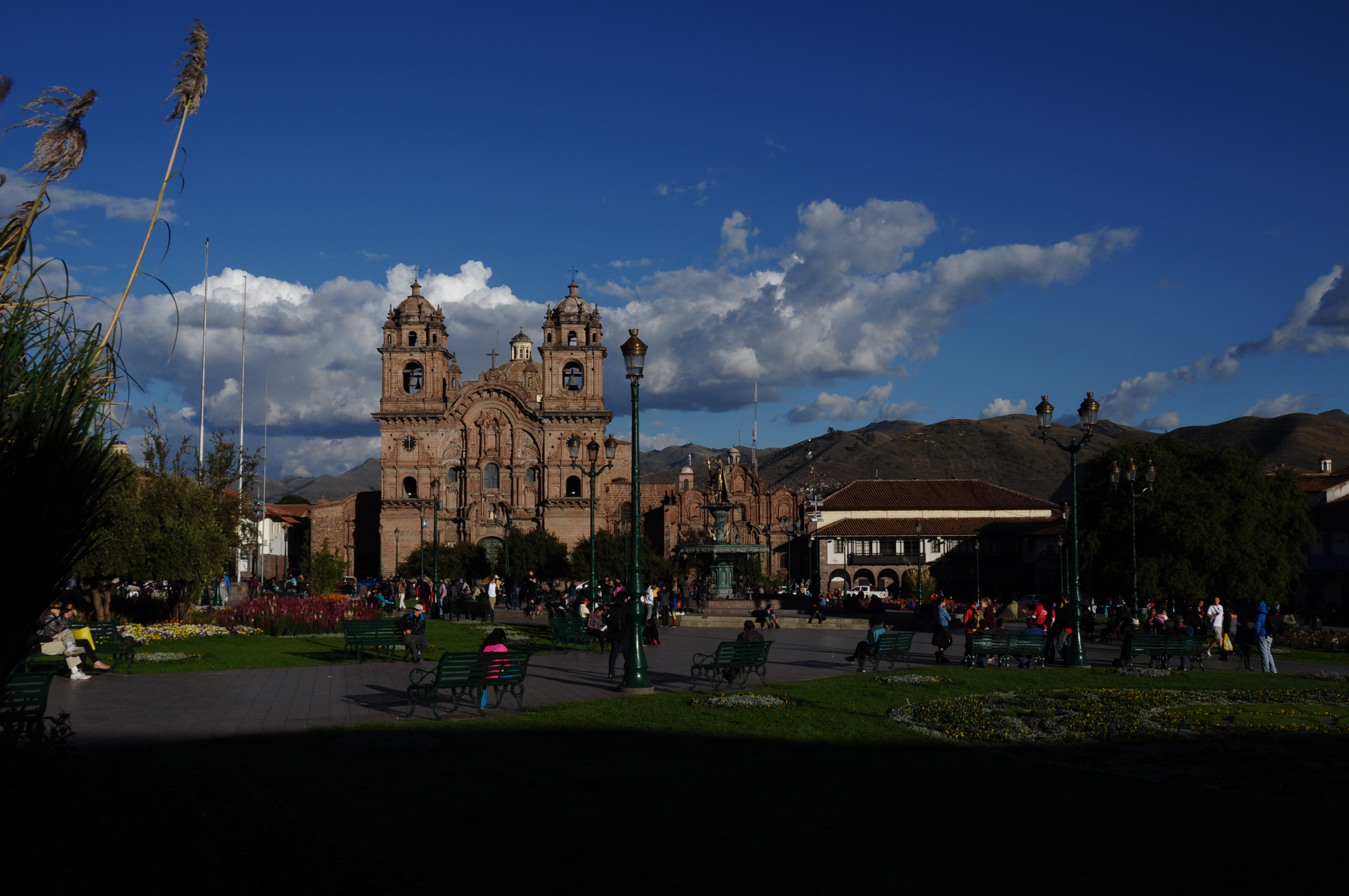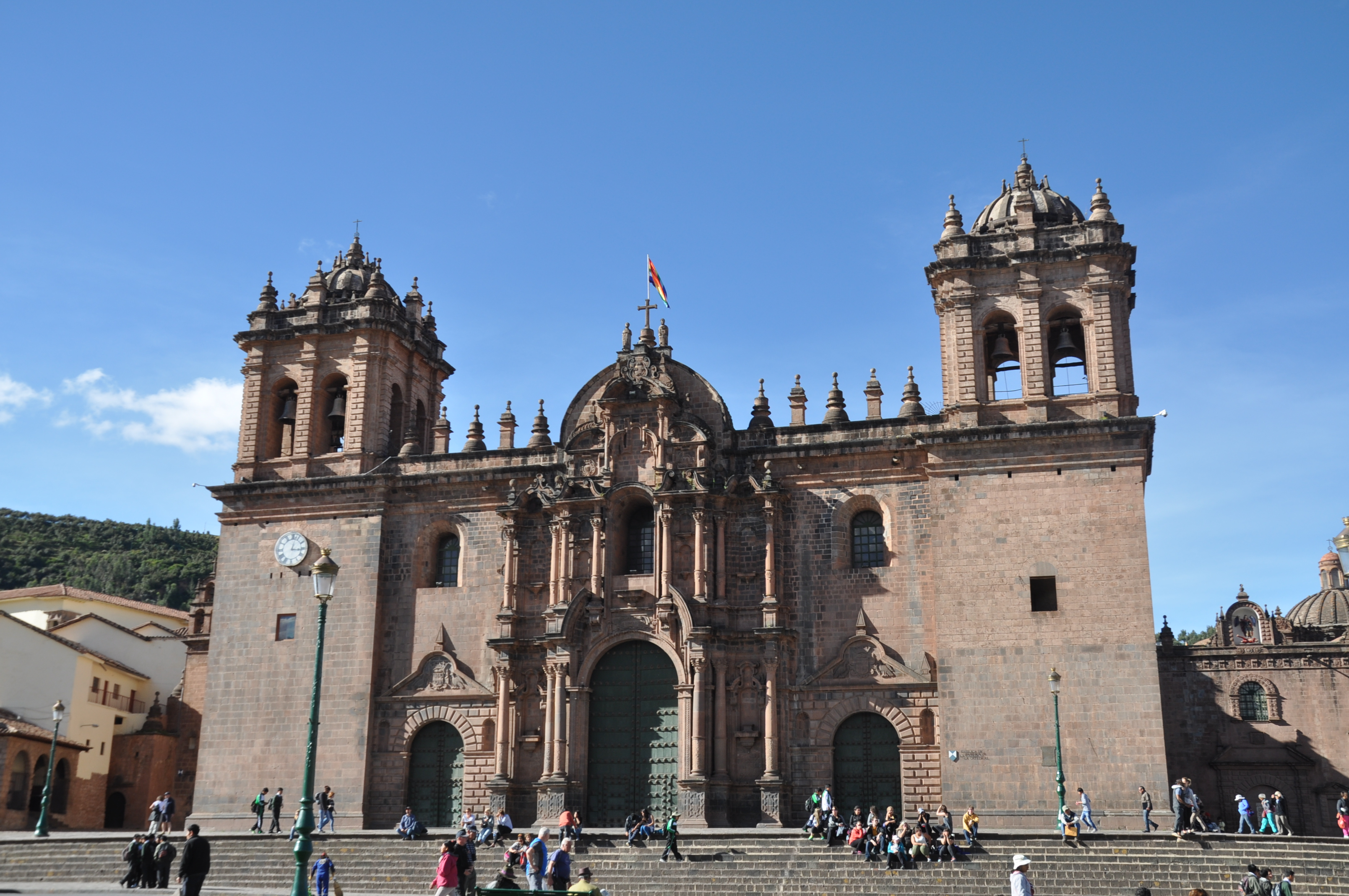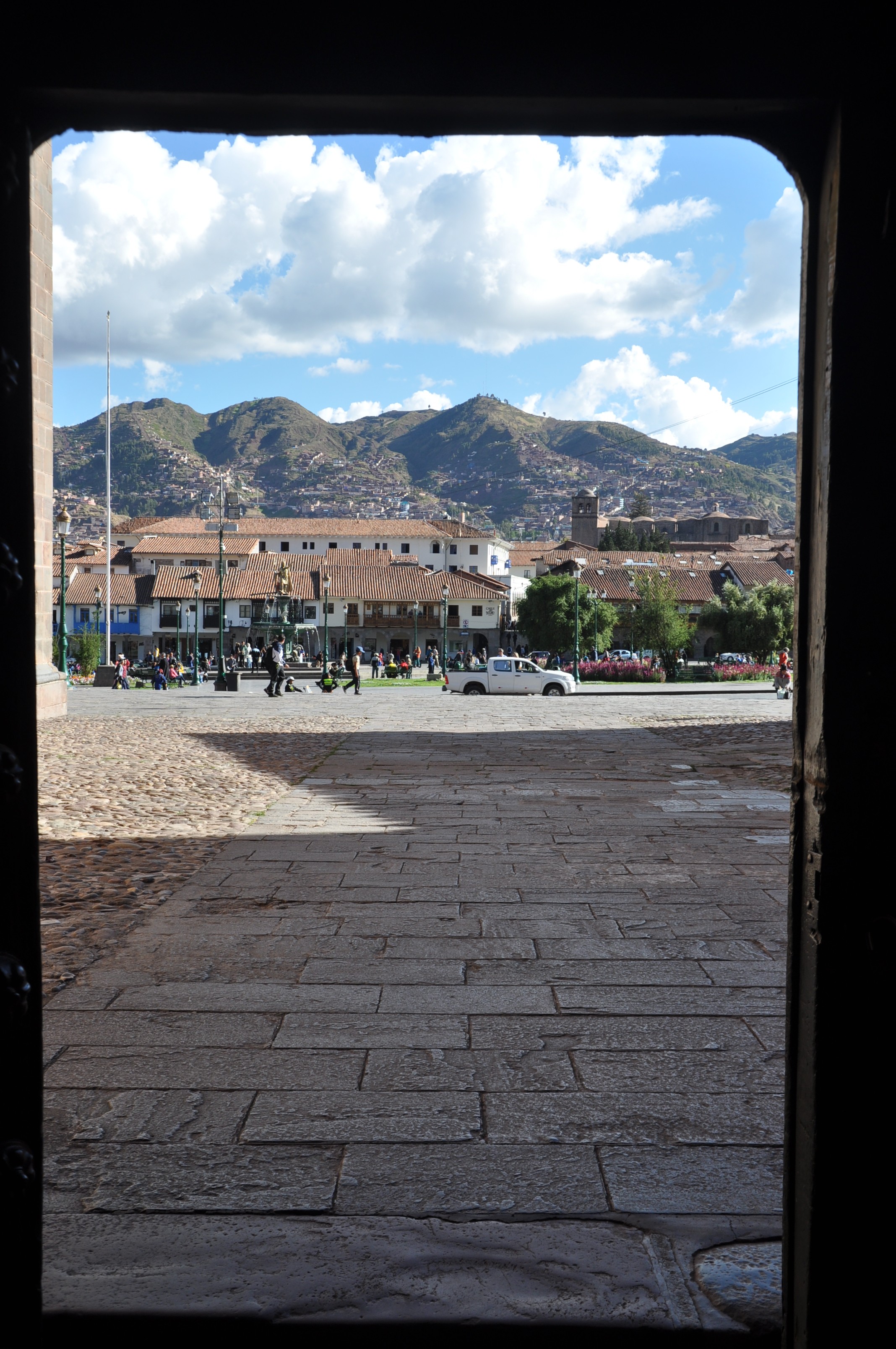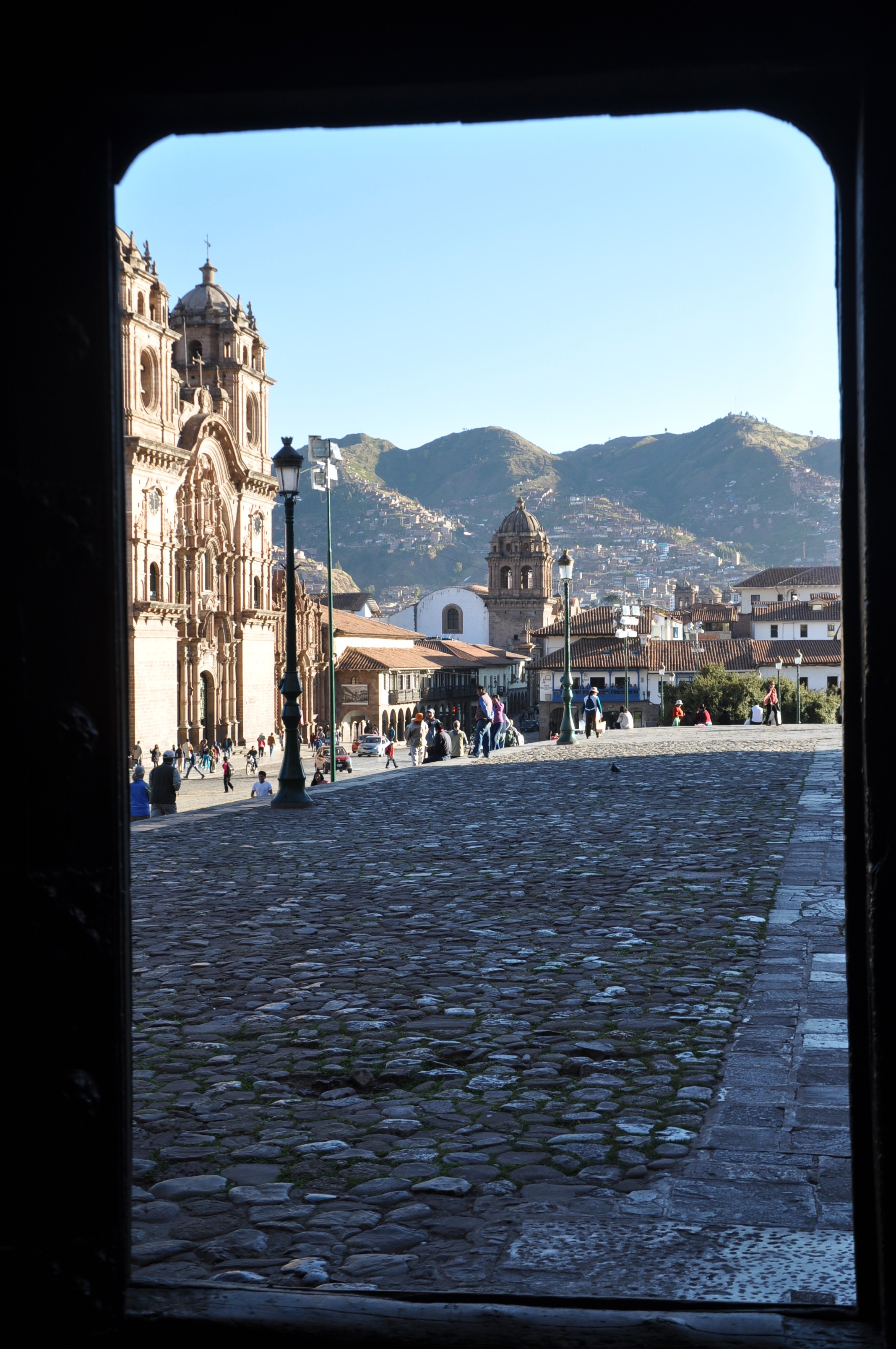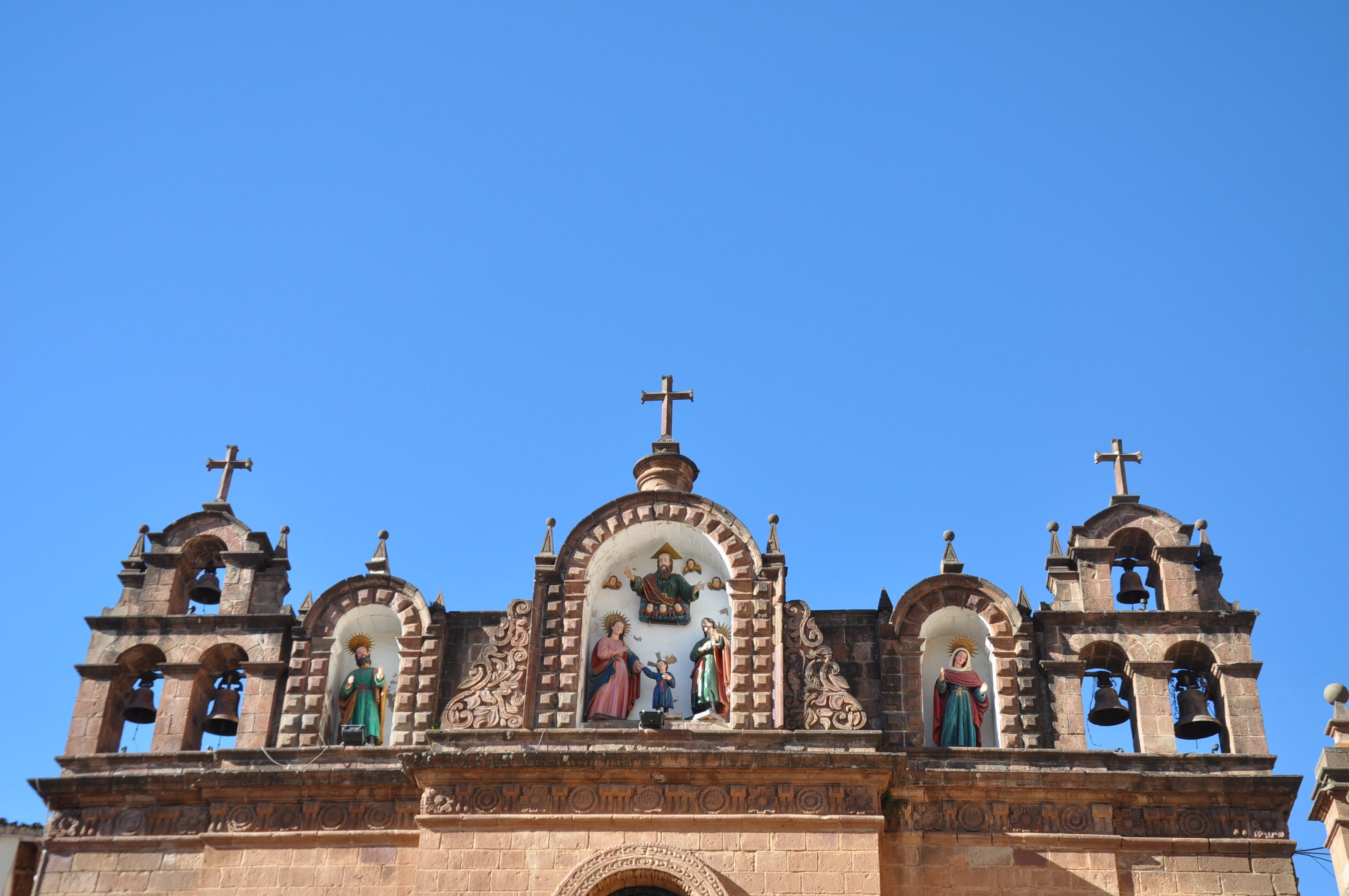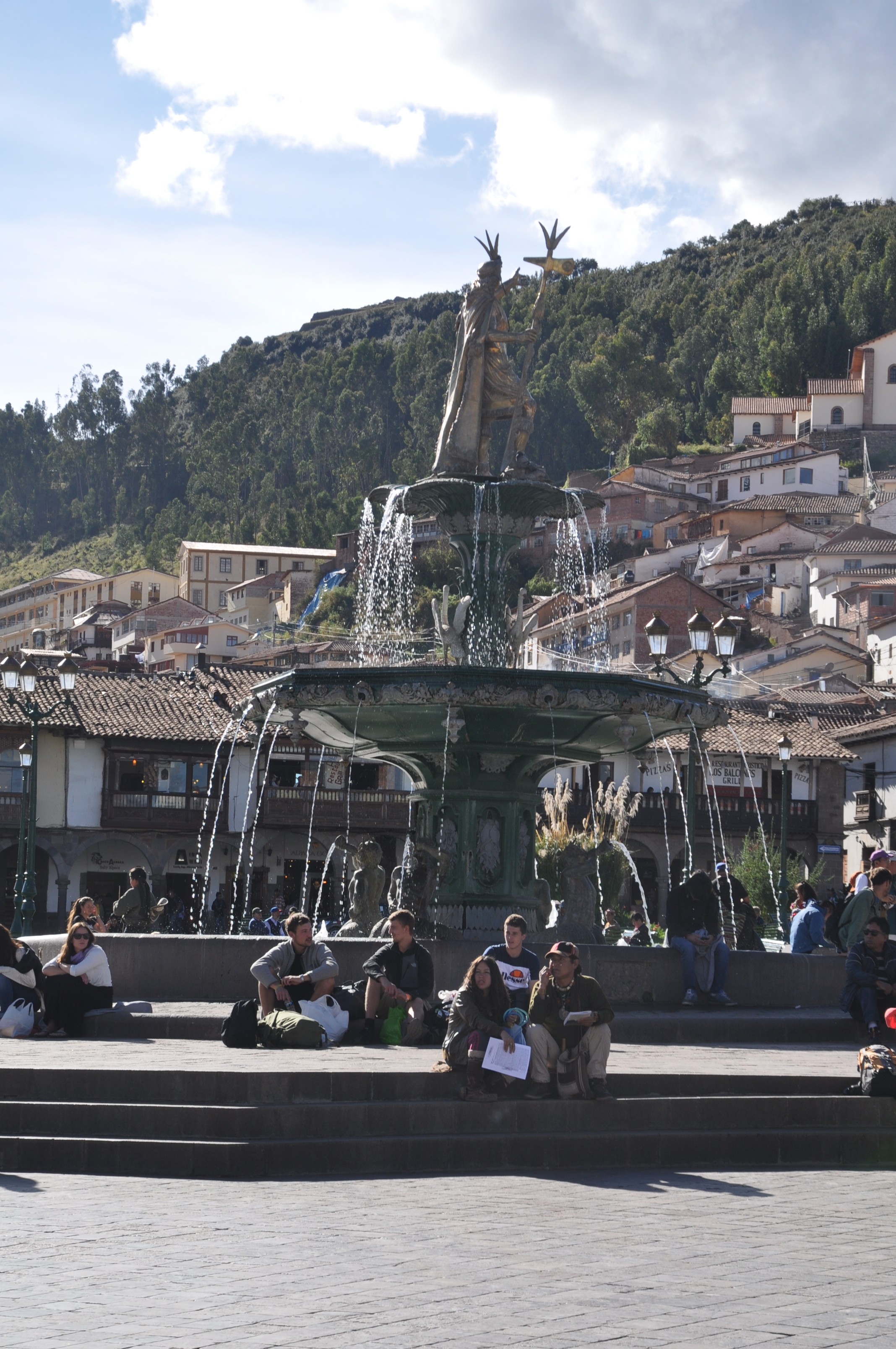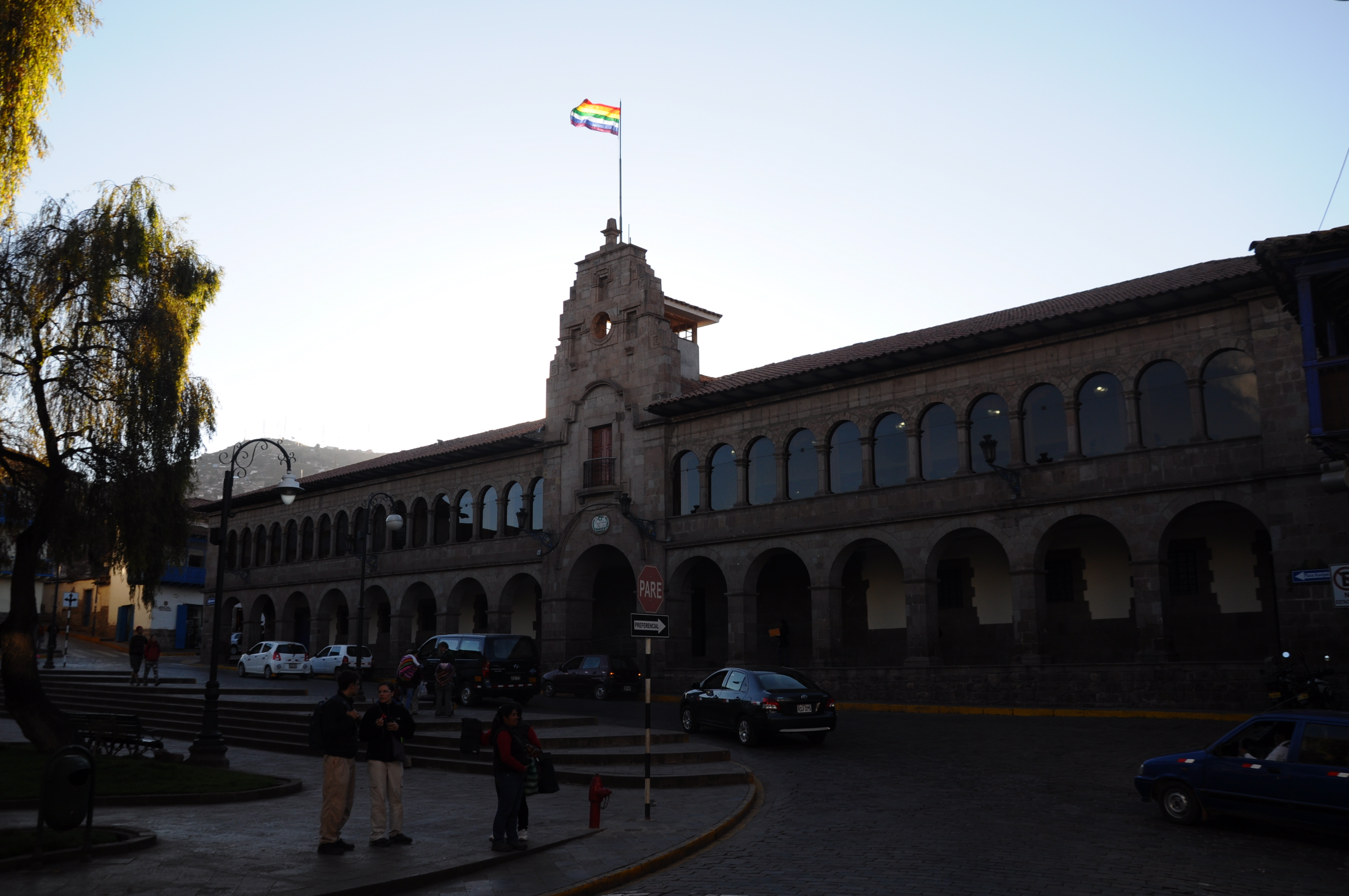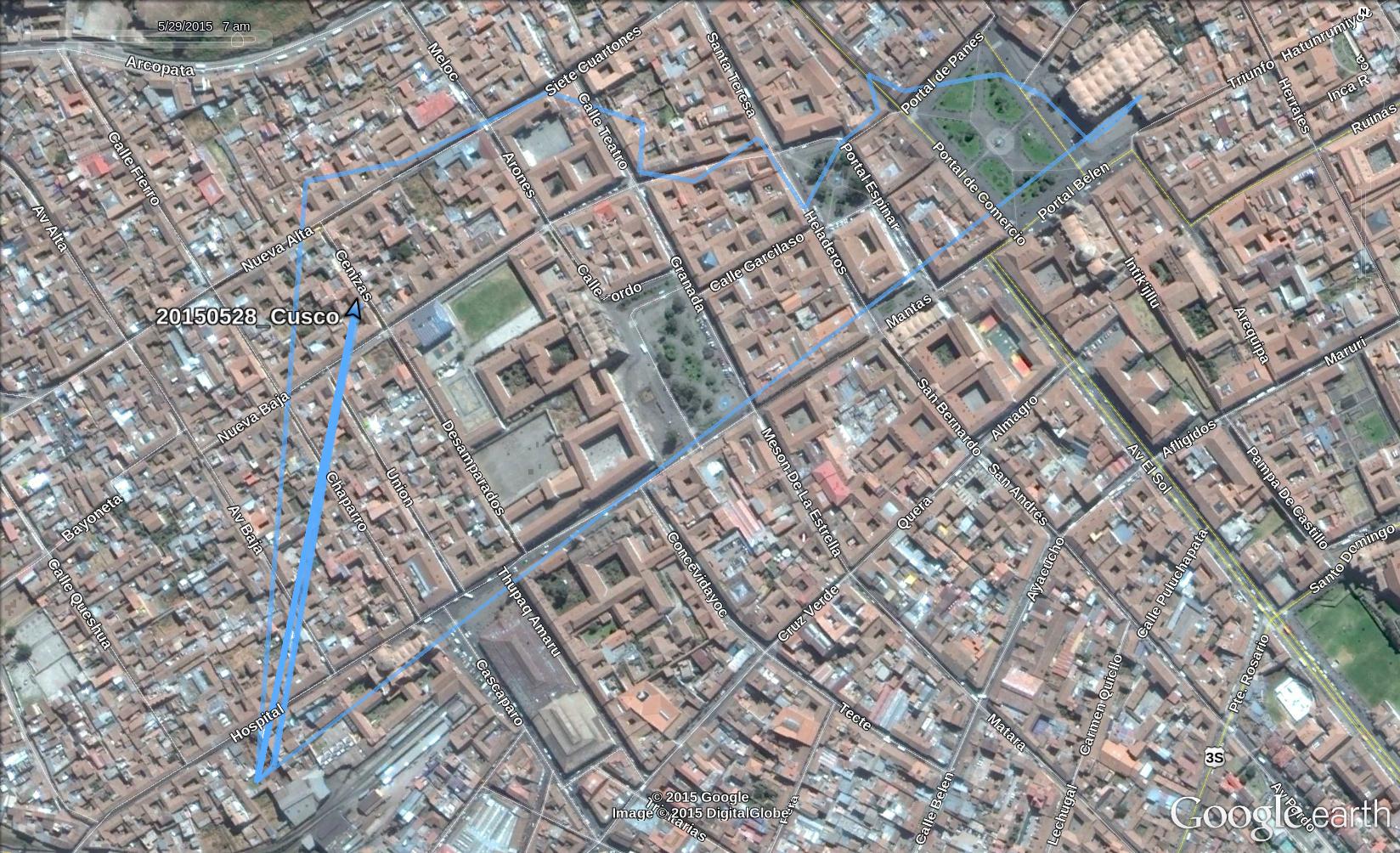History
Cusco was founded around 1200 AC by the Inca and used to be a capital of their empire Tawantinsuyu. This changed in November 1533, when Pizzaro and his men took possession of the city. They admired the city for the beauty of its buildings, and the delicacy of the stone work. That would not prevent them from tearing down the buildings, and to reuse the stones for cathedrals, churches, monasteries and other buildings. Not many of the Inca constructions are left.
In 1950, the city was struck by an earth quake that partly damaged the church and convent, Santo Domingo. This unveiled the long lost foundation of the Inca temple of the sun, Qurikancha, beneath it.
2 buildings of the temple of the sun were restored — not to its original beauty however: In Inca times, the walls and floors used to be covered with 700 golden plates. In the niches of the buildings, the Inca stored mummies of their deceased kings with golden masks. That must have been quite a sight. The conquistadores removed those, melted them, and shipped most of the gold to Spain. The gold left in Cusco that did not end up in the pockets of some conquistadores fuelled the Cusco baroque style, and was used to decorate the altars and the interior of the newly constructed churches.
With the foundation of Lima in 1535 by Pizzaro, Cusco quickly lost much of its significance as a capital and cultural center. It slowly regained it partly, when Hiram Bingham discovered nearby Macchu Picchu in 1911, and it became the gateway for tourists on their way to the Inca city. Today, it is the capital of the Cusco province, and has close to 500.000 inhabitants.
Sightseeing
Cusco is about 3400 meters above sea level. The air is pretty thin, which becomes quite noticeable. Going up a moderately sloped street or ascending a stair case can become physically exhausting. Gisela and to some extent Felix were incapacitated. So we took it easy. While Gisela and Felix mostly slept, I did some sight seeing, went around Plaza de Armas, and visited the cathedral with all its golden splendour. A couple of things stuck to my memory:
- The altar of one of the side churches houses the conquest cross. The Franciscian friar Vicente Valverde, who would become the first bishop of Cusco, brought it from Spain, and took it along with him during the Spanish crusade through South America. It can be seen on paintings depicting scenes from that time, such as a painting in the convent of Santo Domingo that shows the first encounter of Pizzaro and Atahualpa in Cajamarca.
- A wooden crucifix that is blackened from centuries of exposure to candle light fumes.
- A painting of Vincent de Valverde as first bishop of Cusco.
- A wooden closet with a corncob carved into it. The electronic guide described this as an example of the merger of 2 cultures — the corncob from the American continent, and the concept of a wooden closet from Spain.
- The electronic guide referring to current bishop of Cusco who sees the cathedral today as symbol reconciliation, mercifulness, and the merger of the Inca and the Spanish culture. Well, the church is build from stones that were taken from teared down Inca buildings. It stands on top of the palace of the Viracocha Inca, the 8th Inca king. It was certainly a sacred place for ingenious inhabitants of Cusco. And the Inca culture was systematically wiped out by a system of forced labour (which was actually introduced by the Inca as “Mita” system and intensified by the conquistadores), and small pox. Uprisings shortly after the Spanish conquest suggest that the Inca did not really share the sentiment of the bishop of Cusco. Today, Peru is firmly catholic, and nobody seems to have issues.

